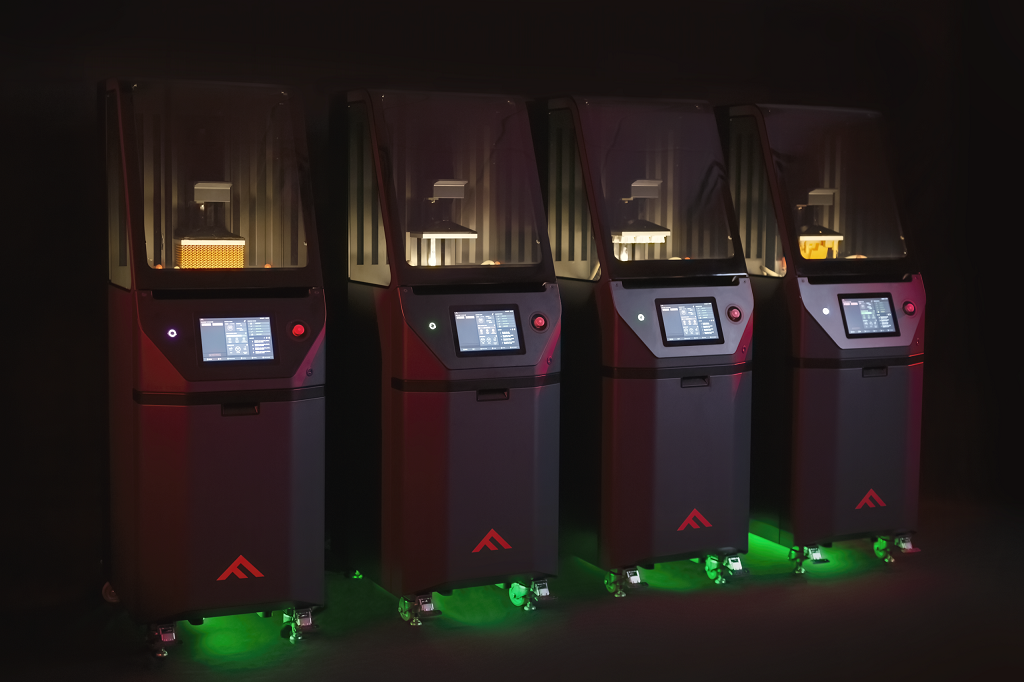
Fortify has begun to ship its FLUX ONE 3D printers.
The timing is perhaps slightly later than anticipated — per conversations this spring with the Boston-based company, the intent was to start shipping this summer — but, given a global pandemic, “slightly later” is still a definite win. The much-anticipated FLUX ONE is now officially out with customers.
Fortify 3D Printing
We’ve spoken to the team several times since their debut, and given the promise shown in those discussions and sample parts, I know I’m eager to hear about the real-world reception to their technologies.
The first area that really caught our attention was what the company is doing with magnets. This technology, Fluxprint, fortifies the composite materials the company works with. CEO Josh Martin explained it this way to me, referencing their Digital Composite Manufacturing (DCM) platform:
“Fluxprint and DCM represents the industry’s first fiber-reinforced DLP additive manufacturing platform. On top of that, this process also creates precisely-tailored composites through our patented magnetic alignment technique. Composites have been traditionally difficult to fabricate and is an often laborious process; this is because the alignment of the reinforcing fibers is paramount to achieving optimized mechanical properties. Fluxprint builds 3D printed composites from the microarchitecture up, allowing forces to dictate form, generating tailored reinforcement. Strength, stiffness, weight, and other mechanical properties can be adjusted voxel by voxel, resulting functional printed parts for applications that could not otherwise be made with 3D printing. Through this technology, we are hoping to democratize the performance of composites.”
Along with Fluxprint, Fortify has developed its Continuous Kinetic Mixing (CKM) system, introduced earlier this year for enhanced photopolymer functionality. For that announcement, I again turned to the CEO for more understanding; Martin explained:
“What this means is this mixing process will increase our abilities. It really gets at that pain point of a lot of the materials at the limit on processability — for materials that are viscous, where you’re looking to do more than aesthetics or make a prototype part, that really require a vaster array of tools from a materials selection perspective. This CKM allows us to process those harder and more valuable materials for manufacturing.”
At the time of that conversation — mid-March 2020 — he also noted that the company’s next big release would be commercial availability to its first customers. We were already under pandemic restrictions at that time, but they were still very new in the US; for me in Cleveland, our conversation was on day three of the early shutdown. What that means is that frankly, no one knew what would be happening over the next few months.
FLUX ONE Shipping
Here we are six months later — and the first Fortify products have officially shipped.
“Despite shutdowns due to COVID, our lean team has been able to push forward and deliver the technology with minimal disruption to our timeline. After several years of development and servicing customers remotely, we are thrilled to have customers using these machines at their site to bring products to market,” Martin says in this week’s announcement.
Shipments have begun, and the company notes that they plan to “fulfill additional orders this year, shipping printers to additional customer sites for tooling and advanced electronic applications.”
The team shared over a video highlighting a closer look at the systems and the software used. Also, it’s nice to see just how cool the magnetic Fluxprint process looks as it happens:
We’ll certainly keep following updates from Fortify as they come. The company is also a Silver sponsor of the upcoming TIPE 3D Printing conference.
Via Fortify
